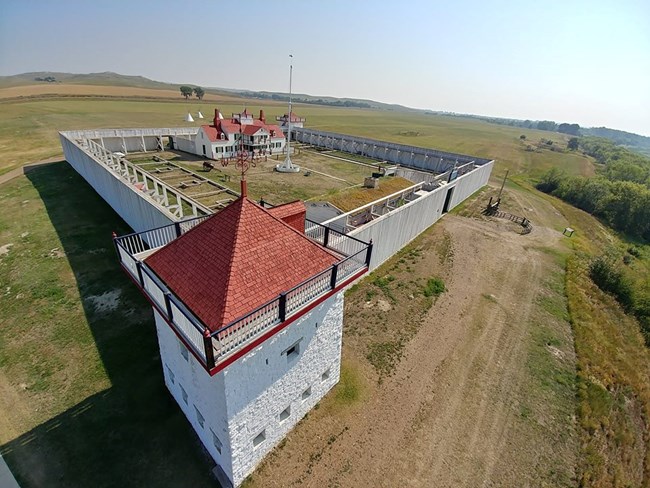
NPS Photo
Overview
At Fort Union Trading Post National Historic Site the transformation from a frontier to an agricultural environment led to the reduction and extirpation of native plant species, followed by the introduction or invasion of exotics. The most notable exotics at Fort Union are crested wheat grass and smooth brome, Canada thistle and Leafy spurge. Dominant native grass species include green needle grass, blue grama, western wheat grass, side oats grama and needle and thread grass. Cottonwood trees dominate the riparian area, ash and dogwood trees also are found. Willow species, Choke cherry, and buffalo berry are the predominant shrubs.The Fort Union Trading Post National Historical Site Vegetation Inventory Project delivers many geospatial and vegetation data products, including an in-depth project report discussing methods and results, which include descriptions to vegetation associations, field keys to vegetation associations, map classification, and map-class descriptions. The suite of products also includes a database of vegetation plots, and accuracy assessment (AA) sites; digital images of field sites; digital aerial imagery; digital maps; a contingency table listing AA results; and a geodatabase of vegetation, field sites (vegetation plots, and AA sites), aerial imagery, project boundary, and metadata.
Products
The products of vegetation mapping projects are stored and managed in the National Park Service's Data Store, a repository for documents and publications relating to park resources. From the highlighted items below, click on the type of information you are looking for.
Last updated: October 5, 2018
